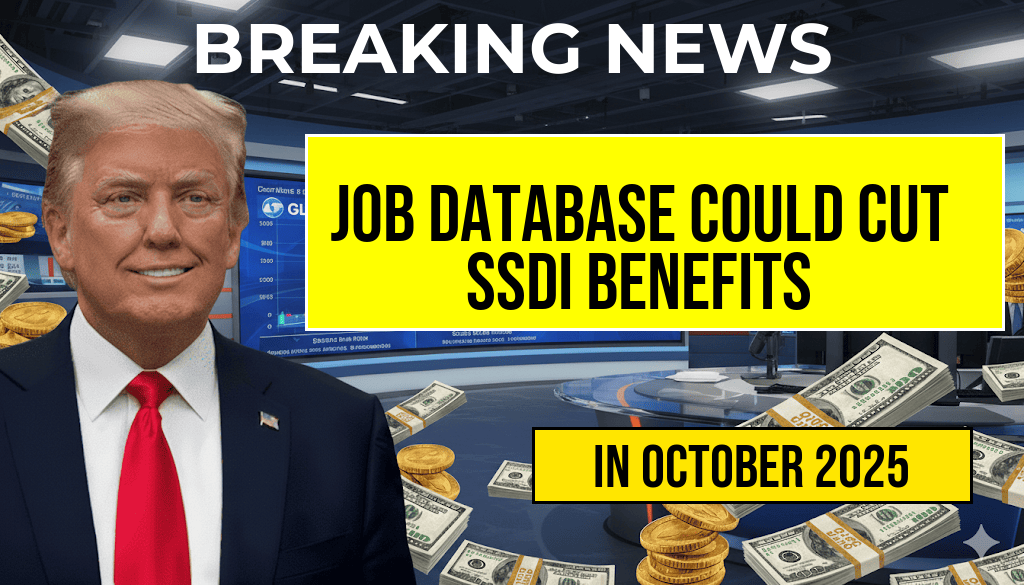A new job database implemented by the Social Security Administration (SSA) is raising concerns among individuals aged 50 to 59 who rely on Social Security Disability Insurance (SSDI). The database, designed to match job skills with available employment opportunities, may inadvertently lead to a reduction in SSDI benefits for many in this age group. Advocates warn that the initiative could place undue pressure on older workers who may already face significant barriers to employment. As more individuals are evaluated against this new database, those deemed capable of work may see their benefits cut or eliminated entirely, creating a precarious situation for many vulnerable citizens.
Understanding the New Job Database
The SSA’s new job database aims to streamline the process of matching job seekers with suitable employment opportunities. By analyzing an individual’s work history, education, and skills, the database generates a list of jobs that align with their capabilities. While the intention is to bolster employment rates among the disabled population, critics argue that the database may not adequately consider the unique challenges faced by older workers, particularly those with long-term disabilities.
Potential Impact on SSDI Benefits
Current regulations allow for SSDI benefits to be reduced or terminated if an individual is found capable of performing “substantial gainful activity” (SGA). The introduction of this job database could lead to more aggressive evaluations of individuals’ abilities. The SSA plans to use the data to reassess beneficiaries’ eligibility, which could mean that many older individuals might be found capable of work even if they face significant obstacles.
Age Group Affected
- Individuals aged 50 to 59: This demographic is particularly vulnerable due to age-related health issues and the difficulty of re-entering the workforce.
- Long-term disability recipients: Many in this group have been on SSDI for years and may lack updated skills or experience in today’s job market.
Concerns From Advocates and Experts
Disability advocates have voiced strong objections to the SSA’s new approach. They argue that the database does not account for the myriad of factors that can affect an older worker’s ability to find and maintain employment. These include:
- Health limitations: Chronic conditions or disabilities can severely limit job options for older individuals.
- Skill gaps: Many in this age group may not have kept pace with technological advancements, making them less competitive.
- Age discrimination: Employers may favor younger candidates, further complicating job placements for older workers.
Government Response and Future Steps
The SSA has stated that the new database is a tool designed to enhance the chances of SSDI recipients finding employment. However, the agency acknowledges the need for a balanced approach that considers the unique circumstances of older workers. As the implementation phase unfolds, the SSA has committed to reviewing feedback from stakeholders to refine the database and its application.
Recommendations for Affected Individuals
- Stay informed: Beneficiaries should keep up with changes to SSDI policies and how they might be affected.
- Gather documentation: Individuals should maintain comprehensive records of their medical conditions and work history to support their SSDI claims.
- Seek assistance: Consulting with a disability advocate or legal professional can provide guidance on navigating potential benefit reductions.
Conclusion
The introduction of the SSA’s new job database signifies a shift in how SSDI recipients will be evaluated for their eligibility. For those aged 50 to 59, this change could mean the difference between having vital financial support and losing their benefits altogether. As the situation develops, it is crucial for affected individuals to stay informed and proactive in addressing the challenges posed by this new system.
For further reading, visit the Social Security Administration or explore expert analyses on this topic at Forbes.
Frequently Asked Questions
What is the new job database mentioned in the article?
The new job database is a tool implemented to assess the employment capabilities of individuals applying for or receiving SSDI (Social Security Disability Insurance) benefits. It aims to identify job opportunities that individuals aged 50 to 59 may be qualified for, potentially impacting their benefits.
How might this database affect SSDI benefits for individuals aged 50 to 59?
The database could lead to a reduction of SSDI benefits to zero for many individuals in this age group if they are deemed capable of working in available jobs. This change targets those who may previously have been considered unable to work.
Are there any exceptions for individuals who may lose their SSDI benefits?
While the article does not specify all exceptions, it is important for individuals to consult with a Social Security representative to understand if there are any specific circumstances that might exempt them from losing their benefits.
What steps can individuals take to prepare for potential changes to their SSDI benefits?
Individuals should review their employment history and consider the types of jobs they might be qualified for. Additionally, they may benefit from seeking advice from a disability advocate or legal expert to navigate the implications of the new database.
Will this change affect all SSDI recipients equally?
No, the impact of the new job database may vary among SSDI recipients. Factors such as age, work history, and specific disabilities will play a significant role in determining how each individual’s benefits are affected.











